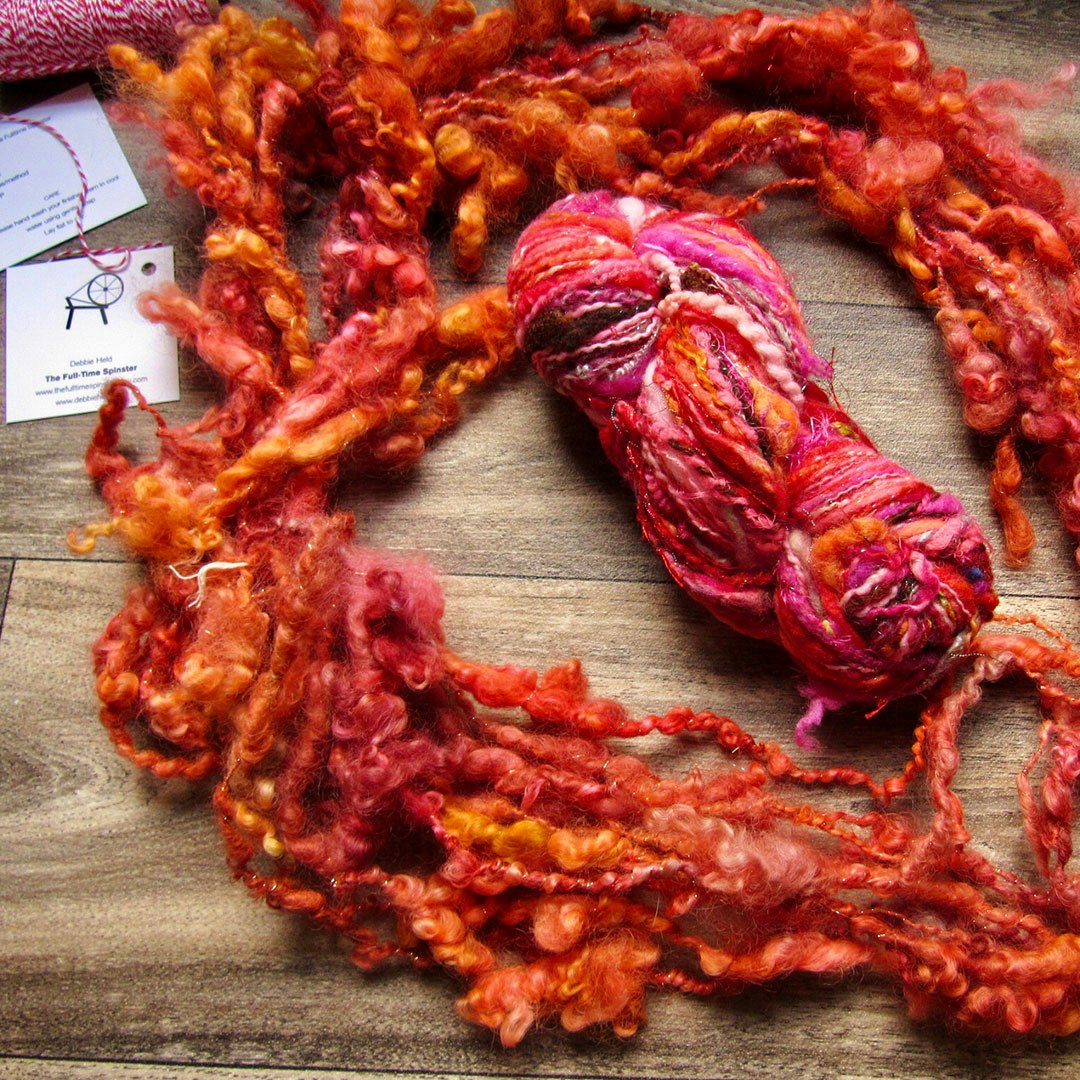There comes a point in time for many handspinners where the sheer volume of handspun skeins in their stash begins to outweigh even the most optimistic of plans for its use. Spinners begin to ponder the possibility of selling their handspun, leading to the question: “How do I price my handspun yarns?” Whether you plan to sell your handspun yarns online, at events, or through your local yarn shop, the key to pricing is understanding your bottom line.
Calculate the True Cost of Your Efforts
A skein of handspun is made up of so much more than the hours logged at the wheel. The professional spinner keeps good records, tracking the true costs. The price of a skein includes the cost of supplies and a spinner’s time.
Here’s a short list of costs to consider:
- Studio space
- Purchasing and maintaining tools
- Sourcing and purchasing fiber
- Washing and preparing fiber
- Dyeing
- Spinning
- Winding skeins
- Maintaining a virtual shop or physical vending space
- Travel to events
- Storing and tracking inventory
- Taking and editing photos
- Website domain costs
- Marketing on social media
- Packaging
- Labeling
- Shipping

For Debbie, lock-spun, auto-wrapped yarns are a labor of love and should be priced accordingly.
Pricing Formulas
Once you have an idea of the costs, grab a paper and pencil, or build a spreadsheet, and get calculating. Below are 3 common ways spinners calculate a skein’s price. Which equation is right for you? Plug in your own numbers and compare the results. Make adjustments where needed until you’ve found the way of calculating the price that works best for your business.
1. By the Hour
Your chosen hourly wage x Hours invested in skein = Price
This formula works especially well for quick-to-spin yarns, taking 2 to 3 hours to spin, and some specialty or textured yarns.
2. By the Yard
Price per yard x Number of yards spun = Price
This method is for the spinner who stocks a range of fibers and spins a variety of yarns.
Some spinners may charge as little as 12 cents per yard for yarn spun from domestic wool top and upward along an increasing scale for luxury fibers, rare wools, or fiber requiring processing, such as hand combing or carding. Professionals or experienced spinners more commonly charge 15 to 22 cents per yard and factor in their baseline costs. Art-yarn spinners charge an average of $1 to $2 per yard, depending on the fibers, preparations, and skillsets used.
3. By the Ounce
Cost per ounce x Number ounces spun = Price
This equation works well for specialty yarns, such as art yarns that can be time consuming to spin but yield low yardage, and skeins spun from costly, luxury fibers and blends.
Final Thoughts
Know that you will not get rich selling your yarns, but you do deserve to earn at least a fair and profitable wage for your time and effort. After all, even a person who enjoys their job should still get paid for doing it. Resist the urge to underprice your inventory. Not only can this negatively impact other spinners who are selling their handspun for profit, but a price that’s too low for the market can be a turnoff for potential buyers, too.
Deborah Held is a freelance writer and a full-time, real-life spinster. She blends wool and words, sharing with others the positive impact that daily handspinning and her commitment to it have brought to her life. She lives somewhere in Atlanta in a sun-filled lair, where her desk and her wheels all sit facing a spinner’s flock of sheep.
Get more tips for selling your handspun yarn in the video download Get More Spun: Spinning for Sale with Abby Franquemont.

